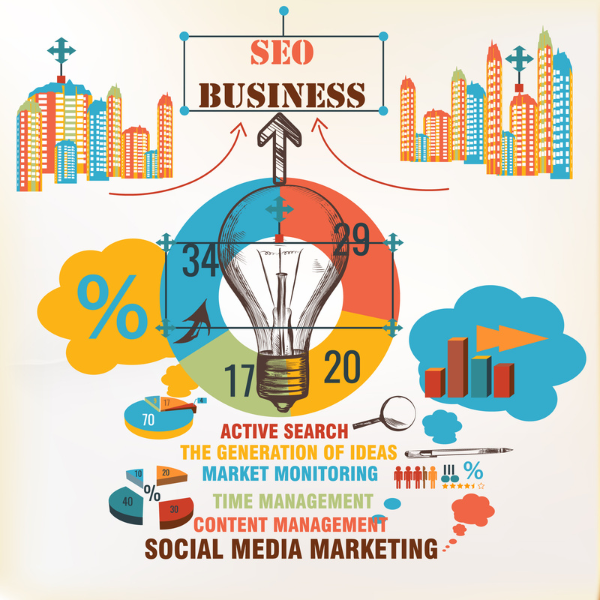Introduction
In the digital age, converting site visitors into customers is the lifeblood of business success. With countless options and short attention spans, consumers have higher expectations and lower loyalty than ever before. This makes driving higher conversion performance an urgent competitive necessity.
But where should digital marketers and e-commerce professionals start when seeking to lift conversion rates? When facing a sea of potential tactics, determining the most effective optimizations can be an overwhelming task.
This comprehensive guide will provide readers with prioritized conversion optimization strategies, high-impact best practices, actionable tips, implementation guides, and powerful analytics for transforming digital experiences into commercial success.
Part 1 – Core Conversion Rate Optimization Essentials
Implementing holistic conversion rate optimization across online touchpoints lays a foundation for commercial growth. Before deploying isolated tactics, businesses should develop core competencies to drive conversions systematically:
Conversion Culture & Mindset
An organization-wide conversion culture focused on continuous testing and enhancement is requisite for ongoing optimizations. Prioritize experiment velocity, key performance indicators (KPIs), and capabilities supporting organized learning. Refine processes enabling teams to efficiently identify frictions, form hypotheses, test new concepts, review learnings, and repeat.
Web Analytics Tracking
Implementing analytics tracking on sites and campaigns provides the foundation for reporting on conversions and diagnosing optimization opportunities. At a minimum, install dedicated conversion tracking like Google Analytics and connect e-commerce platforms for full sales data visibility. Complement with marketing attribution software and experimentation tools like Google Optimize for advanced testing.
Journey Mapping
Mapping the end-to-end buyer journey from initial awareness to loyal brand advocates reveals optimization gaps, experience frictions, and untapped conversion potential across the lifecycle. Holistically connect digital and real-world interactions to uncover all moments impacting consumers. Diagnose where additional conversion options exist.
Visitor Behavior Analysis
Get granular by analyzing the actions site visitors take before converting or exiting to pinpoint experience barriers. Leverage heatmaps, scrollmaps, session replays, and analytics behavioral cohorts to uncover types of users, their interests, pain points, and needs. Address key questions like “Where do visitors click?” and “At what point do they exit?” to spotlight conversion obstacles.
Funnel Optimization Strategy
Methodically break apart the customer journey into conversion funnels focused on acquiring contacts, converting prospects, and retaining customers. Assess funnel performance by conversion rates, drop-off, and velocity through analytics. Improve poor-performing funnels through redesigns addressing identified behavioral gaps, frictions causing fall-off and experience disconnects.
Part 2 – Critical Optimization Tactics Driving Conversions
With core conversion infrastructure established, deploying an orchestrated methodology combining testing, personalization, and customer experience best practices will systematically lift conversions. Essential tactics include:
A/B Testing
The most direct way to confirm page and campaign performance is controlled experimentation using A/B testing tools. These compare a version A against changes made in version B while keeping all else equal to gauge impact. Test CTAs, copy, landing pages, email subject lines, and more to optimize based on visitor response across devices. Examine results through statistical significance measured in conversion lift percentage.
Landing Page Optimizations
As the gateway captures interested visitors, the landing page design strongly influences conversions. Streamline pages to focus solely on one intended purpose based on campaign promises and user intent signals. Guide visitors with clear information hierarchy, choreographed layouts, and visibly placed calls to action. Follow landing page best practices tailored to audience traits uncovered through analytics.
Micro-Conversions
Rather than solely chasing end-transactions like sales, strategically map smaller steps in the journey as conversion milestones. Install micro-conversions tracking the completion of activities like email sign-ups, content downloads, free trials, and catalog views. Cross-sell and upsell to customers demonstrating buying signals through site behaviors. Accelerating prospect engagement boosts long-term loyalty and lifetime value.
Page Speed Enhancements
Fast page loading keeps visitors engaged, leading them down to conversion funnels. Optimize code, enable compression, simplify design, upgrade hosting, and implement content delivery networks to accelerate performance. Set speed benchmarks and continuously improve page elements causing lag across devices. Don’t let technical issues obstruct conversion success.
Part 3 – Customer Experience Best Practices Converting Visitors
Now that we have covered essential conversion optimization toolkits, implementing the following customer experience enhancement principles will further increase response:
Personalization
Serve tailored site experiences matching individual visitor attributes like location, behaviors, and purchase history observed from analytics tracking. Connect visitor data across sessions and channels to construct unified profiles through a customer data platform. Use segmentation and personalization platforms to customize landing pages, product recommendations, and promotions driving higher conversion rates.
Trust-building Social Proof
Effectively influence visitors by prominently displaying social proof elements like customer testimonials, user-generated content, ratings, and reviews. These displays of social validation and trust in your brand will positively persuade conversions across the buyer journey. Ensure proof points match specific audience interests uncovered through analytics.
Frictionless Site Navigation
Consistently point visitors to intended destinations through clear navigation menus, sitemaps linking all pages, suggestive search, and simple internal site search. Streamline menus to most sought customer journeys. Enable seamless omnichannel experiences across devices with mobile responsiveness for conversions. Reduce speed bumps distracting audiences from converting.
Promotional Pop-ups & Email Capture
Drive more on-site conversions by offering time-sensitive promotions in attention-grabbing pop-ups and across-page takeovers. Tailor messaging to the customer lifecycle stage using pop-up personalization. Grow subscriber lists capturing emails in exchange for lead magnets like exclusive content, future discounts, or early access opportunities. Follow email marketing best practices for optimized deliverability prompting further conversions.
Part 4 – Analyzing Conversions and Continuous Optimization
The strategies above detail major opportunities to lift conversions through testing and customer experience enhancements. To complete our guide, this final section will discuss analytical processes enabling data-backed decisions and iterative optimization.
Behavioral Analytics & Lifetime Value
Conversion optimization success depends on an organization’s analytical maturity and data activation capabilities. Leverage business intelligence practices to unify cross-channel data and construct holistic customer records through data lakes and warehouses. Build machine learning models predicting conversion probability based on historical behaviors and patterns. Activate insights by automating data-driven targeting, personalization, and next-best-action recommendations across the lifecycle journey.
Multivariate Testing
Beyond A/B testing isolated variables, advanced multivariate testing allows simultaneous experiments across multiple elements to uncover ideal permutations converting visitors. This factorial testing methodology identifies winning combinations of images, copy, layouts, and more outperforming individually changed components. But beware of excessive multivariate variant creation causing statistically insignificant data requiring bigger sample sizes.
Ongoing Iterative Optimization
Set in place recursive feedback loops enabling continuous experimentation, analysis, and refinements for perpetual conversion gains. Don’t just set and forget email campaigns, site updates, or new product launches. Keep iterating through the building blocks we have covered – plan, implement, measure, learn, and enhance. Foster brainstorming conversion ideas across teams through innovation funnels incentivizing participation.
Conversion Rate Optimization Platforms
To accelerate iterative optimization, integrate dedicated conversion rate optimization systems providing intuitive A/B testing, behavioral targeting and analytics capabilities. These platforms empower marketers to easily experiment while optimizing through automatic site personalization and algorithmic learning. Evolve past static web design to website conversion strategies constantly tailoring experiences to match visitor needs for exponential conversion improvements.
Conclusion
We have covered the essential strategies, tactical enhancements, and analytical infrastructure fuelling top-tier conversion performance. By holistically orchestrating testing processes, customer experience best practices, and continuous optimization, companies can systematically transform digital touchpoints into sustainable conversion engines. While the initial activation work requires concerted planning, properly implemented conversion rate optimization will perpetually multiply returns through compounding gains over time.
FAQs
What is conversion rate?
Conversion rate is the percentage(%) of website visitors who complete a desired action, such as making a purchase, signing up for a newsletter, or filling out a form.
What is conversion rate optimization?
Conversion Rate Optimization (CRO) is the process of improving your website to increase the percentage of visitors who take desired actions, like purchases or sign-ups.
CRO improves user experience, boosts engagement, and maximizes the return on your website traffic.
Which website pages are causing the most drop-offs?
website pages causing the most drop-offs are typically those with slow loading times, confusing navigation, poor content, or weak calls-to-action (CTAs).
Identifying these pages using analytics tools allows you to optimize design, improve content, and reduce bounce rates, boosting overall conversions.
How to calculate your conversion rate?
You can calculate your conversion rate by dividing the number of conversions by the total number of visitors and multiplying by 100.
Formula:
Conversion Rate (%) = (Conversions ÷ Total Visitors) × 100
Tracking this metric helps measure website performance and optimize for higher sales or sign-ups.
What is the average conversion rate?
Average website conversion rate typically ranges between 2% and 5%, though it varies by industry, traffic quality, and website type. Understanding your conversion rate helps set benchmarks, measure performance, and identify opportunities to improve user engagement and sales.
What is a CRO strategy?
CRO (Conversion Rate Optimization) strategy is planned approach to improve your website so more visitors complete desired actions, such as purchases or sign-ups. It involves analyzing user behavior, testing page elements, and optimizing design and content to increase conversions and maximize ROI.
Why Is CRO Important?
CRO (Conversion Rate Optimization) is important because it turns more visitors into customers, improves user experience, and maximizes the value of existing traffic. Effective CRO boosts sales, leads, and ROI without necessarily increasing website traffic.
What is the difference between SEO and CRO?
SEO (Search Engine Optimization) focuses on attracting more visitors to your WordPress website by improving its visibility on search engines.
CRO (Conversion Rate Optimization) focuses on turning those visitors into customers or subscribers by improving website design, content, and user experience.
What are fast ways to improve conversions?
To quickly boost conversions on your WordPress site, focus on:
1. Clear Call-to-Actions (CTAs): Make buttons and links stand out.
2. Simplified Forms: Reduce fields to encourage sign-ups or purchases.
3. Mobile-Friendly Design: Ensure fast loading and smooth navigation on all devices.
4. Compelling Content: Highlight benefits, use testimonials and trust signals.
5. A/B Testing: Test layouts, headlines and CTAs to see what works best.






